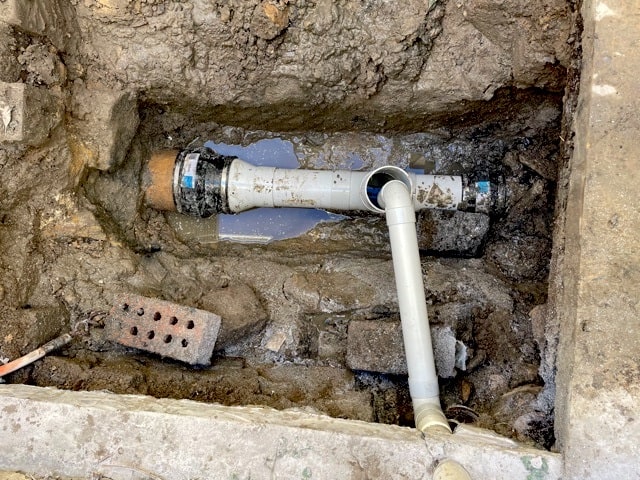As the cold weather approaches, preparing your home for winter is essential, especially your plumbing system. Freezing temperatures can cause pipes to burst, leading to significant damage and costly repairs. Winterizing your plumbing ensures that your water supply remains intact and your home stays safe during the harsh winter months. Here’s a comprehensive guide on how to winterize your plumbing effectively.
1. Insulate Your Pipes
One of the most effective ways to prevent your pipes from freezing is to insulate them. Pipes in unheated areas, such as basements, attics, garages, and crawl spaces, are particularly vulnerable. Here’s how to insulate your pipes properly:
- Pipe Insulation: Use foam pipe insulation or fiberglass insulation sleeves to wrap exposed pipes. These materials provide a barrier against the cold and help maintain the water temperature.
- Heating Tape: For pipes that are at a higher risk of freezing, consider using electrical heating tape. This tape warms the pipes when temperatures drop and can be a good solution for extremely cold climates.
- Seal Drafts: Check for drafts near pipes and seal any gaps with caulk or insulation. This will help keep cold air out and warm air in.
2. Disconnect and Drain Outdoor Hoses
Before the first frost, disconnect all garden hoses and drain them thoroughly. Water left in hoses can freeze, expand, and cause the hose to burst. To properly winterize your outdoor plumbing:
- Drain Hoses: After disconnecting, hold the hose up and allow any remaining water to drain out.
- Store Hoses: Coil hoses neatly and store them in a shed or garage, away from the elements.
- Shut Off Outdoor Faucets: Turn off the water supply to outdoor faucets and drain the water from the pipes. If your outdoor faucets have shut-off valves, make sure to close them.
3. Insulate Outdoor Faucets
Outdoor faucets are particularly susceptible to freezing. Here are some steps to protect them:
- Faucet Covers: Use insulated faucet covers that fit snugly over the spout. These can be found at most home improvement stores.
- Pipe Insulation: If your outdoor faucets are attached to exposed pipes, insulate those pipes as well.
4. Prepare Your Water Heater
Your water heater plays a crucial role in your plumbing system, and preparing it for winter is vital:
- Temperature Setting: Lower the thermostat to around 120°F (49°C). This setting prevents scalding and reduces energy consumption.
- Flush the Heater: Sediment can build up in your water heater over time. Flushing it out helps improve efficiency and prolongs its lifespan. To do this, turn off the power, connect a garden hose to the drain valve, and allow the water to flow until it runs clear.
5. Keep Indoor Plumbing Warm
Maintaining a warm environment inside your home is critical for protecting your plumbing system. Here are some tips:
- Thermostat: Set your thermostat to a consistent temperature, even when you’re away. Aim for at least 55°F (13°C) to prevent pipes from freezing.
- Open Cabinet Doors: If you have pipes located under sinks, especially on exterior walls, open the cabinet doors to allow warm air to circulate around the pipes.
- Let Faucets Drip: On extremely cold nights, let a small trickle of water run from your faucets. Moving water is less likely to freeze.
6. Locate Your Main Shut-off Valve
In the event that a pipe does freeze and burst, knowing how to quickly shut off your water supply is essential:
- Locate the Valve: Find your home’s main shut-off valve, which is usually located near the perimeter of the house or where the water line enters.
- Test the Valve: Ensure it’s operational. Turn it on and off to confirm that it functions properly. If it’s stiff or stuck, consider replacing it.

7. Inspect Your Roof and Gutters
Snow and ice accumulation on your roof can lead to ice dams, which may cause leaks in your home. To winterize your plumbing, make sure to:
- Clear Gutters: Remove leaves and debris from your gutters to ensure proper drainage.
- Inspect Roof: Check for any missing shingles or damage that could allow water to seep in.
8. Consider Professional Help
If you’re unsure about winterizing your plumbing or if your home is particularly vulnerable, consider hiring a professional plumber. They can conduct a thorough inspection and provide additional services, such as:
- Pipe Replacement: If you have old, vulnerable pipes, a plumber can recommend replacements.
- Winterization Services: Many plumbing companies offer winterization services that include draining and insulating your plumbing system.
9. Prepare for Extreme Weather
In addition to winterizing your plumbing, it’s wise to prepare your home for potential winter storms:
- Stock Emergency Supplies: Have bottled water, non-perishable food, flashlights, and blankets on hand in case of power outages.
- Plan for Power Outages: If you live in an area prone to snowstorms, consider investing in a generator to keep your home warm and your plumbing functional.
Conclusion
Winterizing your plumbing is essential for protecting your home from the damaging effects of cold weather. By taking proactive steps to insulate pipes, disconnect outdoor hoses, and maintain a warm indoor environment, you can avoid costly repairs and ensure a worry-free winter. Whether you choose to tackle this task yourself or enlist the help of a professional, investing time in winterization can save you significant headaches down the road.
If you’re also looking to improve your bathroom experience during the winter months, consider exploring bidet seat attachments, which can enhance comfort and cleanliness. You can learn more about these convenient options at https://hi-techplumbingandair.com/plumbing/bidet-seat-attachments/. As the temperature drops, take the necessary precautions to keep your plumbing system in top shape so you can enjoy the winter season without worry.
